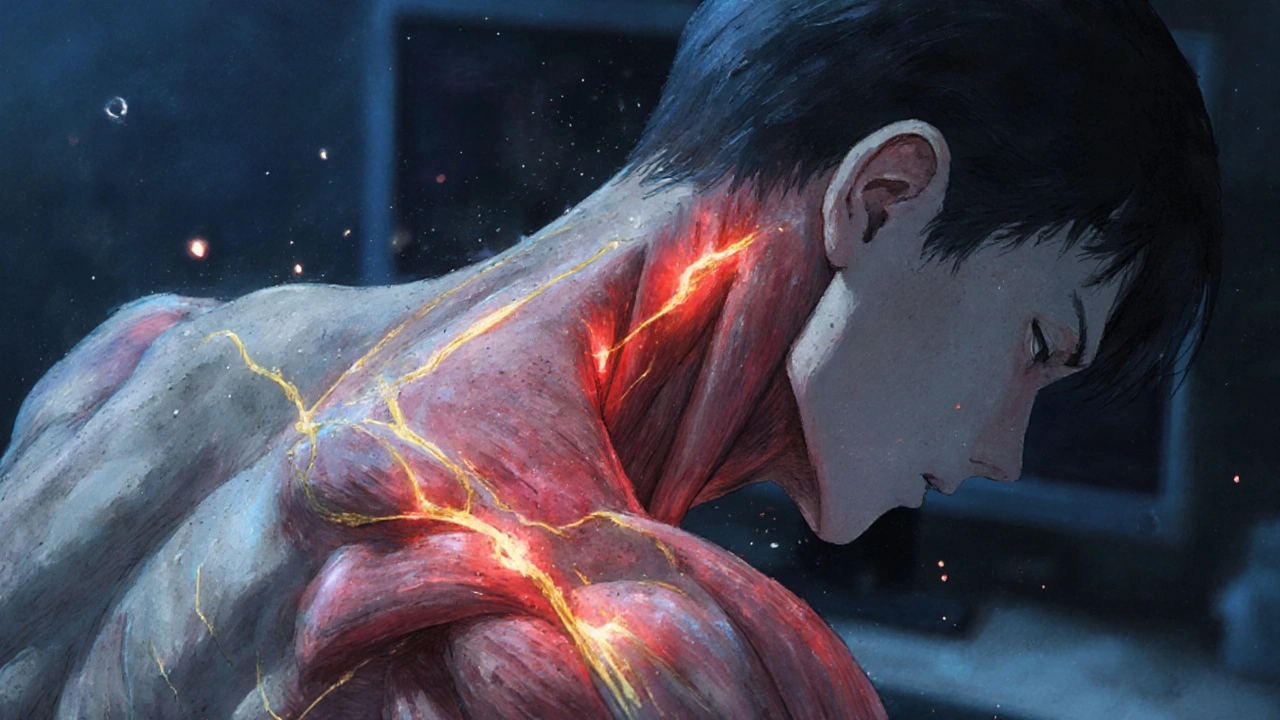Myofascial Pain Syndrome: Causes, Treatments, and How Medications Help
When you have a deep, aching pain in your shoulder, back, or neck that won’t go away—even after rest—it might not be a strain or arthritis. It could be myofascial pain syndrome, a chronic condition caused by tight, irritated bands of muscle called trigger points that refer pain to other areas. Also known as chronic muscle pain syndrome, it’s one of the most common but misunderstood sources of long-term discomfort in men.
This isn’t just soreness. trigger points, localized knots in muscle tissue that feel like hard lumps and cause sharp pain when pressed are the real culprits. They form from injury, overuse, or even stress, and they don’t heal on their own. The pain often spreads—like when a knot in your upper back makes your arm or head hurt. That’s why people mistake it for nerve pain, headaches, or even heart issues. NSAIDs, nonsteroidal anti-inflammatory drugs like ibuprofen and naproxen used to reduce inflammation and dull pain are often the first line of defense. But studies show they only mask the problem. The real fix requires targeting the trigger points directly.
What works better? Physical therapy, dry needling, and trigger point injections, shots of local anesthetic or saline into the knot to relax the muscle and break the pain cycle. Some men find relief with muscle relaxants or even low-dose antidepressants that help reset nerve signals. And yes, long-term opioid use can make this worse by lowering testosterone and increasing muscle tension. The key is not just pain control—it’s breaking the cycle of tightness and pain before it becomes permanent.
What you’ll find here aren’t generic advice or miracle cures. These are real stories and data-backed guides from men who’ve lived with this pain—how they figured out what helped, what didn’t, and how medications like NSAIDs fit into a larger plan. Some used physical therapy and saw results in weeks. Others needed injections. A few found that stopping certain meds (like SSRIs that cause muscle stiffness) made all the difference. This isn’t about one solution. It’s about understanding your body, knowing what to ask your doctor, and finding the right mix that works for you.
Myofascial Pain Syndrome: Trigger Points and How to Release Them
Myofascial pain syndrome is caused by trigger points in muscles that refer pain elsewhere. Learn how to identify them, what causes them, and the most effective release techniques-from dry needling to self-massage-with real-world results.
© 2025. All rights reserved.

